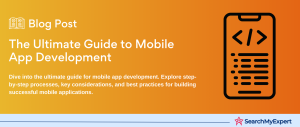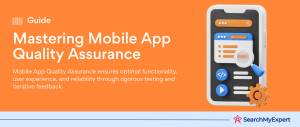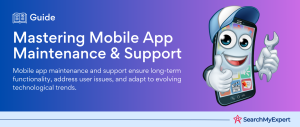In the dynamic realm of mobile applications, establishing a robust app monetization strategy is paramount. We delve into nuanced discussions, unraveling the potential of freemium and premium models, the subtleties of in-app purchases, and the consistent revenue stream offered by subscriptions. By understanding these models’ intricacies, developers and entrepreneurs can seamlessly integrate profitability with exceptional user experiences.
Freemium Model: Balancing Free Accessibility and Premium Features
The freemium model stands as a beacon of flexibility in the app market. Users are welcomed into the ecosystem at no initial cost, with premium features gated behind a paywall. This model thrives on the balance between accessible features enticing enough to captivate interest and advanced functionalities valuable enough to warrant a purchase.
Pros:
- Higher Download Rates: The non-existent entry cost encourages more downloads, broadening the user base.
- Marketing Leverage: Users who enjoy the free version become advocates, indirectly driving conversions through word-of-mouth.
- Data Collection Opportunities: With more users, developers gather ample data for optimizing user experience or targeting in marketing campaigns.
Cons:
- Monetization Delay: Revenue generation isn’t immediate; it’s dependent on conversions to premium versions.
- Perceived Value Risks: If users find the free version sufficient, they may not find enough value to upgrade, limiting revenue potential.
Premium Model: One-Time Payment for Unrestricted Access
Contrasting the freemium’s approach, the premium model asks users to pay upfront, granting complete access to all app functionalities from the outset. This model’s success hinges on the app’s perceived value and the audience’s willingness to invest.
Pros:
- Immediate Revenue: Sales generate instant revenue, contributing to a stable, predictable cash flow.
- Quality Perception: Charging upfront can signify higher value, attracting users willing to pay for quality experiences.
Cons:
- Barrier to Entry: The initial cost can deter users, decreasing the potential user base.
- Dependence on Reviews and Reputation: Without a trial, users rely heavily on reviews, meaning a few negative comments can significantly impact sales.
In-App Purchases: Enhancing Monetization within Free and Paid Apps
In-app purchases inject a versatile monetization layer, applicable to both free and paid apps. This strategy involves selling virtual items, advanced features, or content within the app itself.
Pros:
- Sustained Engagement: Regularly updated purchasable content keeps the app dynamic and encourages continued user engagement.
- Increased Revenue Potential: Beyond the initial sale, there’s continuous earning potential from committed users.
Cons:
- User Experience Disruption: Intrusive or aggressive selling can disrupt enjoyment, leading to negative reviews or churn.
- Complex Management: Balancing what’s available for free and what’s behind the paywall requires careful management to maintain fairness and value.
Subscription Model: Consistency in Revenue and Content
The subscription model demands a periodic fee in return for continued access to the app’s services or content. It’s a match for apps that promise ongoing value, especially in terms of content or service updates.
Pros:
- Predictable Revenue Stream: Regular subscription fees stabilize cash flow.
- User Retention: Continuous updates or exclusive content incentivize users to maintain their subscriptions.
Cons:
- High-Value Expectation: Users expect consistent, high-quality updates, which can be resource-intensive for developers.
- Competitive Market Pressure: With numerous apps vying for subscription dollars, users might be hesitant to commit to recurring payments.
This diagram illustrates the user’s journey through different monetization strategies, emphasizing the pathways towards revenue generation.

Certainly, here’s a detailed comparison table that dissects the primary app monetization strategies, offering a side-by-side analysis for a more informed decision-making process.
| Strategy | Initial Cost for User | Revenue Generation | User Perception | Developer Commitment | Suitability |
|---|---|---|---|---|---|
| Freemium | None | Long-term | Positive if value is clear | High (continuous development for premium features) | Apps with scalable features; those able to offer core value for free |
| Premium | Upfront purchase | Immediate | High expectations; willingness to invest upfront | Moderate (focus on quality and support) | Niche or professional applications; those offering unique functionalities |
| In-App Purchases | None for basic version; varied for purchases | Continuous based on user engagement | Tolerable if purchases enhance experience; negative if perceived as necessary | High (regular content/feature updates required) | Games; interactive apps; services with potential for feature expansion |
| Subscription | Recurring payment | Predictable and stable | High demand for consistent value | Very High (demand for fresh, valuable content) | Content platforms; apps with regularly updated services |
This table elucidates that each strategy comes with distinct expectations and commitments, both from the perspectives of the user and the developer. The Freemium model, while user-friendly, demands a meticulous balance to entice upgrades. Premium strategies hinge on perceived value and reputation, necessitating a high-quality offering from the start.
In contrast, In-App Purchases require a delicate balance, ensuring the basic offerings remain satisfying while the purchasable enhancements are enticing. Lastly, the Subscription model, demanding the highest level of commitment, promises a consistent revenue stream but places significant pressure on developers to deliver top-tier perpetually, evolving content.
Conclusion
Choosing an app monetization strategy requires a blend of understanding your target audience, app’s unique value, and market trends. By aligning the monetization model with the user’s perceived value and expectations, developers and entrepreneurs can craft a strategy that not only sustains financial growth but also enhances user satisfaction and engagement. The balance lies in offering palpable value that resonates with users’ willingness to spend, ensuring the app’s commercial success and longevity in the competitive marketplace.
Turn Visions into reality with top Mobile App Development Companies.
Table of Contents
Toggle






